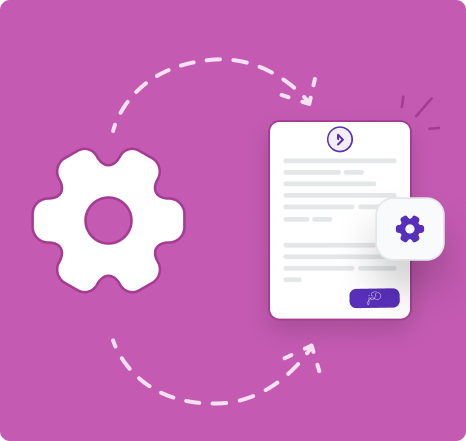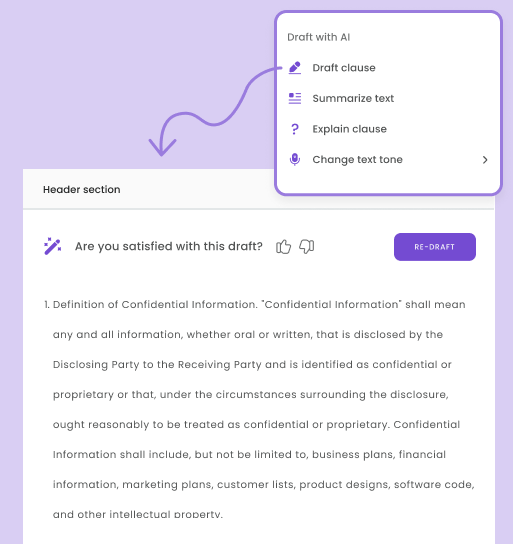When problems crop up repeatedly, it’s clear that you’re not addressing the right issue which can be frustrating.
It can also lead to doubt, inefficiency, and loss of credibility.
There are many ways to get to the root of the problem – root cause analysis. A longstanding method is the 5 Whys analysis.
It’s a method of analysis that asks why is something happening until you get to the root of the problem.
In this guide, you’ll get a deep understanding of what the 5 Whys analysis technique is, how it works, and the benefits it’ll bring when used properly.
Let’s dive in.
1. What Is the “5 Whys” Technique?
The “5 Whys” technique is a root cause analysis that was developed by Sakichi Toyoda. Yes, that’s the founder of Toyota. After he created it, Toyota used the concept and methodology to continuously improve.
As mentioned previously,5 Whys is a technique or method of root cause analysis that asks the question ‘why’ up to five times to get to the core of a problem. It seems simple on the surface but the answers you have to come up with aren’t always obvious.
How It Works
The technique is powerful but you don’t just start asking why. It’s more nuanced than that and involves multiple steps. The second step is repeated until the root cause is found.
- Define the Problem: Understand and state what the issue is. The statement should be clear and leave little room for misinterpretation.
- Ask “Why?”: Do a preliminary assessment about what caused the issue.
- Ask why again: Usually, the first “why” only deals with the surface symptoms and doesn’t address the core problem
- Repeat:
- Stop When the Root Cause Is Found: Stop asking why and take action on what you’ve discovered.
Oftentimes, the question why needs to be asked five or more times to get to the core of the problem. Let’s look at an example where the solution is more complex than meets the eye and would have been overlooked if not for asking why over and over again.
- Problem: Your car has refused to start.
- Why? The battery died.
- Why? The headlights were on all night.
- Why? Your kids didn’t check if the lights were on when they parked it.
- Why? They parked in the middle of the day and couldn’t see the headlights.
- Why? They weren’t taught the basic things to do to maintain a car and to check for when they’re done driving.
Root Cause: Poor education about car maintenance and routine checks to perform.
The Concept of Iterative Inquiry
The reason the 5 Whys is useful is because it takes an iterative approach to problem-solving. It’s like peeling back the onion layer by layer until you get to the core. It helps you find and address deeper issues to prevent problems from happening again.
When you do a 5 Whys analysis, the first few answers are usually about the symptoms you can see like a dead battery. This can produce a quick fix which is sometimes necessary. Continuing to ask why after the initial assessment will allow you to investigate further and develop more comprehensive solutions.
Of course, since you’re addressing the root cause, you prevent the problem from happening again. In the example of the dead battery, the solution wasn’t just to charge the battery (which is necessary), you’ll also need to educate the kids to prevent it from happening again.
2. The Power of Asking “Why?”
Critical Thinking
Each additional “Why?” in the 5 Whys technique gives you a reason to go further, dig deeper, and think critically about the issues you’re facing. The more whys you ask, the more you move beyond superficial analysis and into a more comprehensive understanding of the entire issue.
While you may still implement quick fixes for things that need to be resolved immediately, your inquiry doesn’t end there. By thinking critically about the problem and running various scenarios, you identify the root cause and prevent overly simplistic solutions from becoming the norm.
Uncovering Hidden Causes
Asking “Why?” repeatedly helps uncover hidden causes that might otherwise remain overlooked. As mentioned previously, the initial analysis using the 5 Whys technique usually produces surface-level solutions and quick fixes.
When you continue asking why, you find the true issues. For example, a delayed project might initially appear to be a scheduling problem. However, by asking “Why?” multiple times, you may discover root causes such as unclear communication channels or inadequate resource allocation. Armed with that information, you may then choose to reallocate issues or put in a set of processes for better communication.
Breaking Mental Assumptions
The iterative process of asking “Why?” challenges biases and assumptions that may hinder problem-solving efforts. Folks, either intentionally or unintentionally, may have preconceived notions about the problem or solutions, leading to subpar solutions.
For example, if a piece of equipment has been breaking down for years, the people performing quick fixes may accept that it’s the way things work. When using the 5 Whys, you’re forced to look beyond what you accept as the truth and dig deeper.
The 5 Whys technique pushes you to re-evaluate these mental models. You break down ingrained thinking patterns and embrace evidence-based solutions.
3. The 5 Whys Process: Step-by-Step
Step 1: Clearly Defined Problem
Without a clear problem, there can be no clear solution. It’s a good idea to write the problem down in a way that’s measurable and can be understood by others. This simple step will make sure everyone is on the same page and working towards the same goal. For example, you won’t say ‘the process takes a long time.’ You’d say ‘During peak hours, the process takes at least 20 minutes to complete when it should only take 5 minutes.’
Step 2: Ask the First “Why?”
You’ve defined the problem. Now, it’s time to ask why. Why did this occur? The goal here is the immediate cause and, potentially, an immediate solution. If the process takes too long, the first answer you get may have to do with bottlenecks in the process such as not enough people available.
Step 3: Ask the Second “Why?”
You now have the initial cause of the problem and need to move on to the deeper underlying issues. This builds on the first why. If the first answer was that you don’t have enough people to handle peak hours, the second why may discover that even though business has increased no additional staff have been scheduled during those times. You now have a deeper understanding of the issue.
Step 4: Continue Asking “Why?”
Continue this process and to peel back the layers and get a better understanding of the problems you’re experiencing. By the time you ask subsequent questions, you’ll often find problems that are more systemic in nature. By the fifth why, you may realize the problem has to do with budget approvals to hire more staff.
Step 5: Identify and Address the Root Cause
Once the root cause is identified—typically by the fifth “Why?”—the focus shifts to implementing solutions. This step involves addressing the foundational issue to prevent recurrence. In the example, the root cause might be the absence of a robust performance management plan, prompting corrective actions like implementing automated monitoring and regular audits.
5. Advantages of Using the 5 Whys Technique
Simplicity
The 5 Whys technique stands out for its simplicity. It’s a straightforward method that requires no advanced tools, extensive training, or specialized knowledge. Relying solely on asking iterative questions, ensures you focus on understanding the problem without getting bogged down by technicalities. Its accessibility makes it an effective tool across various industries and situations, from manufacturing to daily operational challenges.
Cost-effective
One of the key advantages of the 5 Whys is its cost-effectiveness. Since it involves little more than collaborative brainstorming and critical questioning, it demands minimal resources. This makes it particularly appealing to small businesses, startups, and personal use cases, where budgets for advanced analytical tools might be limited. The simplicity of implementation allows organizations to achieve impactful insights without significant financial investment.
Improves Problem-Solving Culture
Beyond addressing specific issues, the 5 Whys technique fosters a culture of continuous improvement and critical thinking. By encouraging team members to engage in thoughtful questioning and seek deeper causes, it promotes a proactive approach to problem-solving. Over time, this mindset strengthens collaboration and builds a foundation for innovation, as teams learn to view challenges as opportunities for growth and refinement.
6. Common Pitfalls of the 5 whys and How to Avoid Them
Focusing Too Much on Symptoms
A common mistake in applying the 5 Whys technique is stopping the inquiry at surface-level symptoms rather than pushing deeper to uncover the root cause. For instance, identifying “equipment malfunction” as the problem without investigating why the malfunction occurred leaves the issue unresolved. To avoid this pitfall, ensure each “Why?” builds on the previous answer, delving into systemic factors or processes that contributed to the problem. Regularly ask yourself if the answer addresses the root or merely a symptom.
Jumping to Solutions Too Quickly
Another frequent error is rushing to implement solutions after identifying an apparent cause, bypassing deeper exploration. Prematurely addressing a perceived issue risks solving the wrong problem or creating new challenges. To prevent this, remain committed to completing all iterations of the 5 Whys process before acting. This disciplined approach ensures a more comprehensive understanding of the problem, allowing for effective and sustainable solutions.
Groupthink
Groupthink can skew the results of the 5 Whys analysis when teams prioritize consensus over critical evaluation. This can lead to biased or incomplete answers that fail to uncover the true root cause. To counteract groupthink, encourage diverse perspectives within the team and create a culture where questioning is welcomed. Involving individuals from different departments or backgrounds can provide fresh insights and minimize blind spots.
Conclusion
The 5 Whys is a powerful technique to get to the root cause of many situations. It’s simple, straightforward, and cost-effective. It requires little training to start using and, can break bad habits, and overcome biases.
With that being said, it’s not perfect. It can lead to focusing on the symptoms, set up a situation where you jump to conclusions, and sometimes promote groupthink. It should be used but also apply a healthy dose of trial and error to get it right.
When you get your process right, consider automating them with DoxFlowy – our document automation platform. Let me know what you think in the comments and don’t forget to share.




